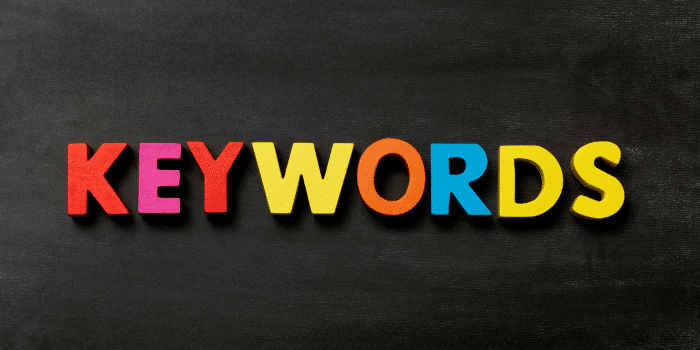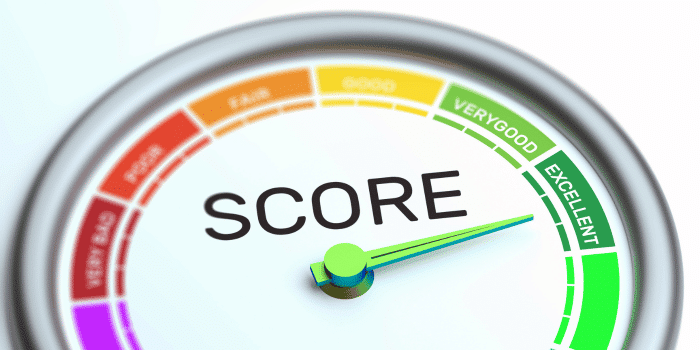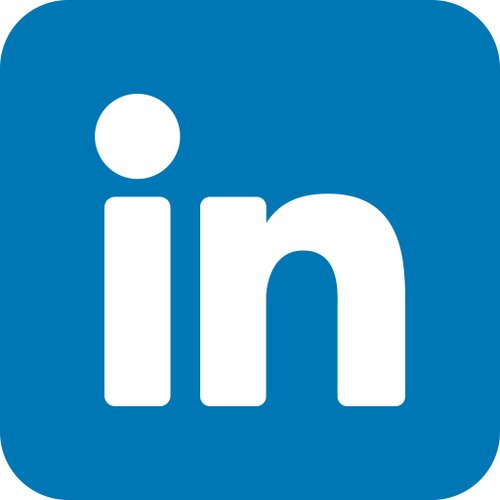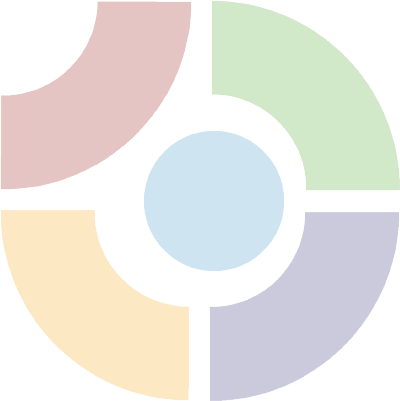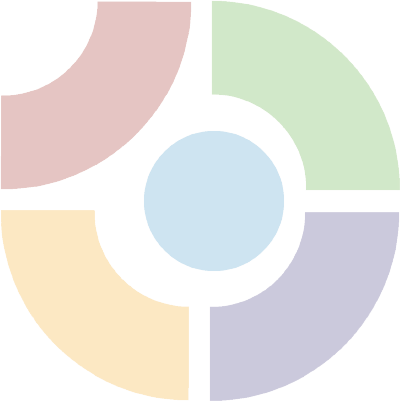PPC, or Pay-Per-Click, and social media advertising are two dynamic tools in the digital marketing arsenal. PPC, or pay-per-click advertising, empowers businesses to target specific keywords on search engine results pages and click ads, offering budget control and campaign performance tracking. On the other hand, social media advertising thrives on precise targeting based on user demographics, interests, and behaviors across platforms like Facebook, Instagram, LinkedIn, and Twitter, allowing advertisers to reach specific audiences with their digital marketing strategy and online marketing campaign. It boasts engaging ad formats such as images, videos, carousels, stories, and social ads.
In today’s marketing landscape, integrating pay-per-click (PPC) into a comprehensive strategy is crucial for driving targeted traffic and generating leads. Meanwhile, social media ads, as an advertiser, complement other channels by enhancing brand visibility while reaching a broader audience base. Leveraging PPC data and social ads provides marketers with valuable insights into target audience behavior and preferences.
Fundamentals of PPC
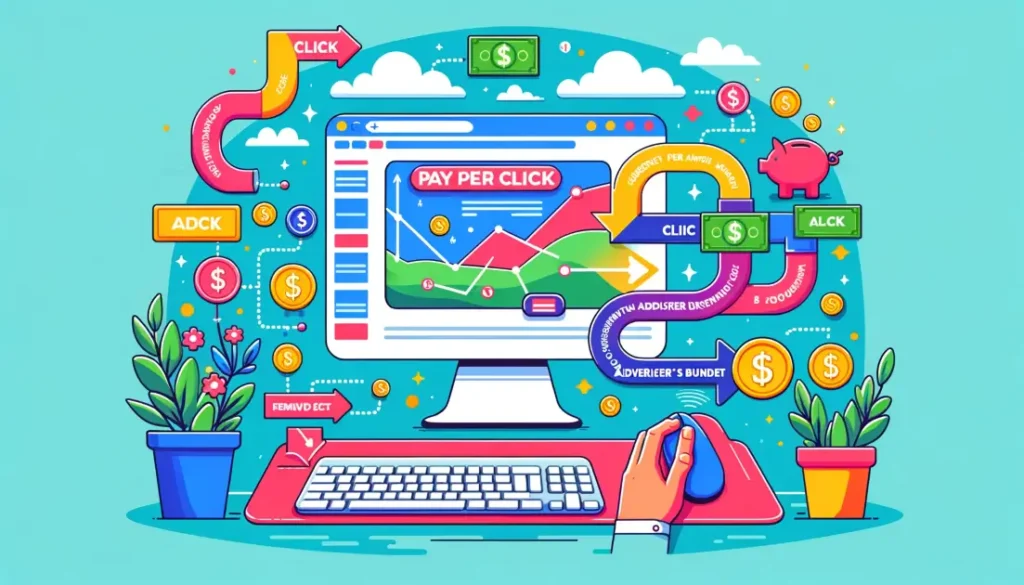
Pay-Per-Click Mechanics
Pay-per-click (PPC) mechanics involve bidding on keywords relevant to your business, targeting a specific audience, and using a strategic approach to display ads on top search engines or social media platform. Advertisers only pay when someone clicks on their PPC ad, hence the name “pay-per-click.” The position of your ad is determined by factors like bid amount, ad quality score, and relevance to the user’s search query.
For example, if a company sells sports shoes, they can bid on keywords like “running shoes,” “athletic footwear,” or “sports sneakers” to have their ads displayed when users search for these terms. When a user clicks on the ppc ad after searching for one of these terms, the advertiser pays a predetermined cost per click.
Types of PPC Ads
There are different types of PPC ads:
- Search ads: These are text-based ads displayed on search engine results pages (SERPs) based on user queries and seo.
- Display ads: Visual ads shown within the Google Display Network or social media sites.
- Video ads: These appear before, during, or after video content on platforms like YouTube.
For instance, a clothing brand might use display ads featuring images of its latest collection across various fashion websites in the Google Display Network. This allows them to reach potential customers who are interested in fashion and style-related content through SEO.
Keyword Research Basics
Keyword research involves identifying relevant search terms that users enter into search engines when looking for products or services related to SEO. Tools like Google Keyword Planner help identify high-volume and low-competition SEO keywords. Keyword research is crucial for optimizing PPC campaigns and improving ad targeting.
Let’s say an online bookstore wants to promote its new arrivals through PPC advertising. By conducting keyword research using tools such as Google Keyword Planner, they can discover popular book genres people are searching for online. This enables them to target specific keywords related to these genres in their Pay-Per-Click campaigns effectively.
Platform Differences
Different PPC platforms have unique features, targeting options, and audience demographics. Google Ads is popular for search ads while Facebook Ads offers extensive social media targeting capabilities. Understanding platform differences helps advertisers choose the right channels for their Pay-Per-Click campaigns.
For example:
- A travel agency may find it more beneficial to use Facebook Ads due to its ability to target users based on interests and behaviors relevant to travel.
Social Media PPC Versus Search PPC
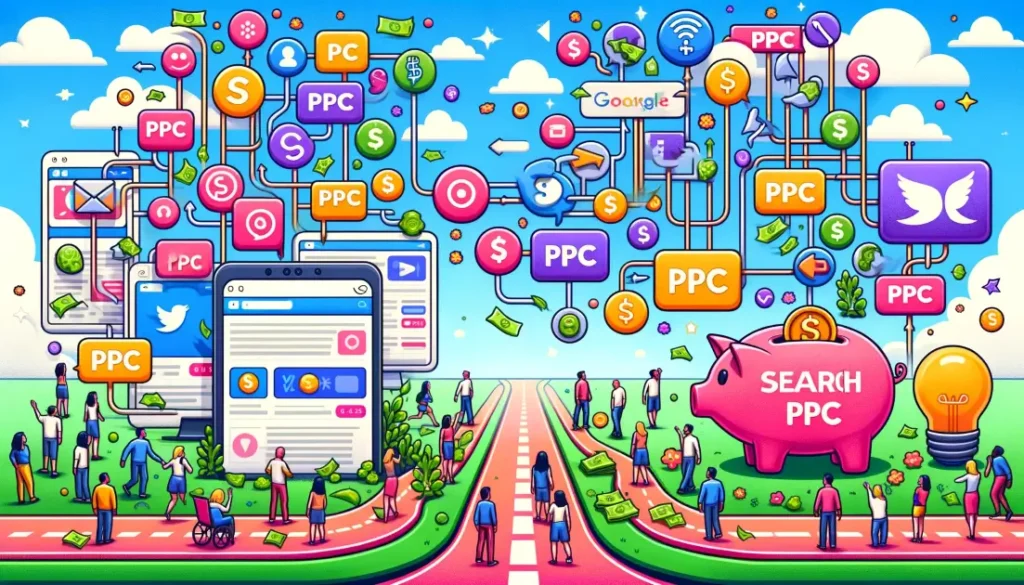
Ad targeting strategies for PPC advertising differ between social media and search engines.On social media, you can define specific characteristics of your target audience such as demographics, interests, and behaviors. This allows you to reach people based on their personal details and online activities. For example, if you’re selling athletic wear for women, you can target females aged 18-35 who have shown an interest in fitness-related pages or accounts.
Conversely, search engine Pay-Per-Click focuses more on keywords related to user searches. When someone looks up “best running shoes,” your ad for athletic wear could appear alongside the search results. The difference lies in reaching new customers actively searching for products versus those being targeted based on their online behavior.
Advanced targeting options also vary; while social media offers remarketing and lookalike audiences, search engines provide options like dynamic search ads that automatically show relevant ads based on website content.
User Intent Strategies
Understanding user intent is crucial in both types of PPC advertising. In the context of a user’s query or social interaction, it refers to the purpose or goal behind it. For instance, when someone searches “running shoe reviews,” they might be looking for information rather than intending to make a purchase at that moment.
In response to this intent-driven behavior, your ad content should align with what users are seeking—be it informative blog posts about running shoes or direct links to product pages depending on where they are in the buying cycle.
Engagement Impact
Both forms of PPC offer distinct advantages regarding visibility and engagement metrics:
- Instant Visibility: Search engine PPC ensures quick visibility within relevant search results while social media PPC swiftly positions ads within users’ feeds.
- Targeted Reach: Social media PPC excels at precise audience targeting based on interests and behaviors whereas search engine PPC targets users through keyword relevance.
- Measurable Results: Both platforms supply detailed analytics enabling businesses to measure ROI effectively by tracking clicks, conversions rates etc.
Pros and Cons of PPC Advertising
Benefits of PPC
PPC advertising offers detailed targeting options for advertisers. This means they can define their ideal audience based on demographics, interests, and behaviors. For instance, if a company wants to target females aged 18-24 who are interested in fitness and wellness, it can do so through the platform’s targeting tools.
Moreover, Facebook campaigns are created using the Facebook Ads Manager platform. This allows advertisers to choose from various campaign objectives, such as brand awareness, lead generation, or website traffic. Each objective serves a different purpose and caters to specific marketing goals.
PPC advertising options provides an opportunity for businesses to reach new customers who might not have found them otherwise. For example, when someone searches for “best running shoes,” an ad for a sports store selling running shoes may appear at the top of the search results page.
Limitations and Challenges
One challenge with PPC advertising is that increasing competition can drive up bid prices, making it more expensive to run successful campaigns. As more businesses compete for ad space on popular platforms like Google or Facebook, the cost per click (CPC) tends to rise.
Facebook Ads for Social PPC
Advertisers have a variety of ad formats at their disposal, such as image ads, video ads, carousel ads, and collection ads. Each format offers distinctive features and advantages tailored to engage users effectively. For instance, carousel ads allow showcasing multiple products or services within a single ad unit, while video ads can convey compelling narratives visually.
Adopting the most suitable format is crucial for achieving campaign goals and resonating with the target audience. For example, if the aim is to showcase a range of products or tell a story through visuals, carousel or video ads might be more effective than static image ads. Moreover, by selecting the right format based on user behavior patterns and preferences, advertisers can maximize engagement and conversion rates.
Ad Formats on Facebook
In addition to diverse ad formats, Facebook provides extensive audience targeting options encompassing demographics (age, gender), interests (hobbies), behaviors (purchase intent), and connections (page likes). This granular level of targeting empowers advertisers to tailor their campaigns precisely according to their ideal customer profiles.
Moreover,Custom audiences enable advertisers to retarget existing customers or website visitors by uploading contact lists or installing pixels on their websites. This approach helps maintain brand visibility among potential buyers who have already shown interest in the products or services offered.
Furthermore,Lookalike audiences expand reach by identifying new users who exhibit similar characteristics as an advertiser’s existing customer base. By leveraging this feature effectively in Pay Per Click campaigns on social media platforms like Facebook, businesses can tap into untapped markets that share similarities with their loyal customer segments.
Audience Targeting
The primary goal of Pay Per Clickcampaigns is driving traffic towards websites through captivating ad copy and relevant landing pages optimized for conversions. Crafted call-to-action buttons prompt users to click through advertisements actively—leading them directly towards specific sections of your website where they are more likely to convert into paying customers.
| Types of Facebook Targeting | Explanation |
| Demographic Targeting | Targeting based on age, gender, education, income, and more |
| Interest Targeting | Targeting based on users’ interests, hobbies, and activities |
| Behavioral Targeting | Targeting based on users’ online behaviors and purchasing habits |
| Custom Audience Targeting | Targeting based on a list of specific individuals or customers |
| Lookalike Audience Targeting | Targeting users who are similar to an existing customer base |
| Location Targeting | Targeting based on users’ geographic location |
| Connection Targeting | Targeting based on users’ connections to a Facebook Page or app |
SEO, PPC, and SMM Comparison
Traffic Generation Techniques
| Technique | SEO | PPC | SMM |
| Definition | Search engine optimization is the process of improving a website’s visibility in organic search engine results. | Pay-per-click advertising is a model where advertisers pay a fee each time their ad is clicked. | Social media marketing involves using social media platforms to promote a product or service. |
| Cost | Can require significant time and effort, but no direct cost for organic rankings. | Advertisers pay for each click on their ads, costs vary depending on keywords and competition. | Can be cost-effective, but costs can vary depending on the platform and campaign objectives. |
| Traffic Source | Organic search engine results. | Paid search engine results. | Social media platforms. |
| Targeting | Can target specific keywords and demographics. | Can target specific keywords, demographics, and geographic locations. | Can target specific demographics and interests. |
| Longevity | Results can take time to achieve and may be long-lasting. | Immediate results, but traffic stops when ads are turned off. | Immediate results, but traffic stops when campaigns end or posts lose visibility. |
| Control | Limited control over search engine algorithms and rankings. | Full control over ad campaigns and budgets. | Full control over campaign strategies, content, and posting schedules. |
| Conversion Rate | Can have high conversion rates if targeted correctly. | Can have high conversion rates if keywords and ad copy are optimized. | Can have high conversion rates if content and engagement strategies are effective. |
| ROI | Can provide long-term ROI if done effectively. | Can provide immediate ROI if campaigns are well-managed. | Can provide immediate ROI if strategies are well-executed. |
| Skill Requirement | Requires knowledge of SEO best practices and website optimization techniques. | Requires knowledge of keyword research, ad targeting, and campaign management. | Requires knowledge of social media platforms, content creation, and community management. |
Conversion rates measure the percentage of users who complete a desired action, such as making a purchase or filling out a form. PPC campaigns can be optimized to improve conversion rates by refining ad targeting, ad copy, and landing page design. Tracking and analyzing conversion rates provide insights into campaign effectiveness.
For instance, if an online shoe store wants to boost sales through PPC advertising on social media platforms, they can create targeted ads for specific demographics (e.g., age group, location) with compelling ad copies that lead customers to dedicated landing pages featuring the advertised shoes. By tracking how many users from each demographic actually make purchases after clicking on the ads, the store gains valuable data about which audience segments respond best to their Pay Per Click campaigns.
Conversion Rates
PPC campaigns can have both short-term and long-term impacts on business growth. In the short term, there is an immediate increase in website traffic, leads, and sales when well-crafted PPC ads are displayed prominently on social media platforms. Over time, this contributes to improved brand visibility and increased customer loyalty leading to sustained business growth in the long run.
Consider a new online subscription service promoting itself through paid ads on Instagram. Initially, these targeted advertisements bring in new subscribers at an impressive rate due to high visibility among relevant audiences. As more people become familiar with the service over time through continued exposure via social media marketing efforts like Pay Per Click campaigns – even those who didn’t subscribe immediately – some eventually sign up for subscriptions based on brand recognition built over time.
Long-Term vs Short-Term Impact
Campaign objectives define specific goals you want to achieve through your PPC campaigns; examples include driving website traffic or boosting sales using strategic targeting options available within popular social networks like Facebook or Twitter Ads Manager tools.
Pay-Per-Click’s Role in Social Media Ads
Campaign Objectives
PPC campaigns play a crucial role in boosting brand visibility across various platforms, including social media. By leveraging PPC, businesses can reach a broad audience through search engines or social media channels. Metrics like impressions and reach gauge the exposure your ads receive, providing valuable insights into the effectiveness of your campaign. Furthermore, maintaining consistent brand messaging and using creative visuals can significantly enhance brand awareness, making your business more recognizable to new customers.
For instance:
- A clothing company running a PPC campaign on Facebook aims to increase its brand visibility among young adults interested in fashion.
- By utilizing PPC on Instagram, a local coffee shop seeks to raise awareness about its new line of organic products among health-conscious consumers.
In addition:
- The use of captivating images and compelling ad copy is essential for maximizing brand exposure through PPC campaigns on social media platforms.
Brand Awareness and Reach
One powerful platform for implementing PPC strategies is Google Ads, which offers extensive capabilities for displaying ads across Google’s search results pages, partner websites, as well as YouTube. With various ad formats available such as text-based ads, display ads, responsive search ads (RSA), and video ads, businesses have diverse options to showcase their offerings effectively. Moreover, Google Ads provides sophisticated targeting features enabling advertisers to tailor their campaigns based on demographics, interests, behaviors, or keywords relevant to their target audience.
Furthermore:
- Bidding strategies such as cost-per-click (CPC), cost-per-thousand-impressions (CPM), or cost-per-acquisition (CPA) allow advertisers to optimize their budget allocation based on specific campaign goals.
- Detailed analytics tools within Google Ads provide invaluable data regarding user interactions with the advertisements while conversion tracking helps measure the return on investment (ROI) from these efforts.
Popular PPC Platforms Overview
Google Ads
Google Ads is a powerful platform for advertisers to reach potential customers through search and display ads.With Facebook Ads Manager, businesses can create and manage ads on both Facebook and Instagram, tapping into the vast user base of these social media platforms. For instance, Instagram ads can be displayed in users’ feeds or as stories, offering visual storytelling opportunities that resonate with audiences.
Leveraging Facebook’s extensive user data allows advertisers to target specific audiences based on demographics, interests, and behaviors across both platforms. This level of targeting precision helps maximize the impact of ad campaigns by reaching the most relevant audience segments.
Facebook and Instagram Ads
Industries, or company sizes. This makes it easier for businesses to tailor their messaging specifically to decision-makers within organizations. On the other hand, Twitter ads enable businesses to reach a broader audience through promoted tweets or accounts.
Both LinkedIn and Twitter offer unique targeting options tailored to their respective user demographics. For example, LinkedIn provides advanced targeting criteria such as company connections and job experience while Twitter offers interest-based targeting.
LinkedIn and Twitter Ads
Effective campaign planning is crucial for achieving success with PPC advertising on social media platforms. It involves setting clear goals that align with overall marketing objectives. Defining target audiences based on demographic information ensures that ad content reaches the right people at the right time.
Moreover, researching keywords related to products or services offered by a business helps inform campaign strategy by identifying popular search terms used by potential customers. Additionally,analyzing competitors in the market provides valuable insights into industry trends which can be leveraged when crafting compelling ad content.
Creating a comprehensive timeline is also essential as it ensures timely execution of campaign activities such as ad creation, budget allocation adjustments,and performance monitoring throughout each phase of the campaign lifecycle.
Implementing a Social PPC Campaign
The first crucial step is campaign planning. Compelling ad copy and engaging visuals play a vital role in capturing users’ attention. By A/B testing different ad variations, you can identify the most effective elements for driving engagement and conversions. This process should be ongoing to continuously optimize campaign performance.
For example, if you’re promoting a new line of sneakers on Facebook, testing different ad copies with images showcasing various features like comfort, style, or durability can help determine which resonates best with your audience.
Ad Creation and Testing
Setting a realistic budget is essential for maximizing the impact of your PPC campaigns. Allocating budget based on campaign objectives and expected return on investment (ROI) helps optimize spending. Regular monitoring of campaign costs and adjusting bids ensure efficient budget management.
Let’s say you have allocated $500 for a week-long Instagram PPC campaign aimed at increasing website traffic. Based on past data or industry benchmarks, you might allocate more budget towards ads that drive direct clicks to your site rather than those focused solely on brand awareness.
Budget Management
Analytics tools like Google Analytics provide valuable insights into campaign performance, user behavior, and conversion tracking. Key Performance Indicators (KPIs) such as click-through rate (CTR), conversion rate, and cost per acquisition (CPA) help measure campaign success. Analyzing data helps identify areas for improvement and make data-driven decisions.
For instance, analyzing social media PPC data may reveal that while one platform generates higher CTRs, another delivers better conversion rates at a lower CPA. This insight allows you to reallocate budgets effectively based on each platform’s performance metrics.
Measuring Social PPC Effectiveness
Analytics and KPIs
Measuring the effectiveness of PPC campaigns on social media involves analyzing various Key Performance Indicators (KPIs) to determine the return on investment (ROI). By comparing the revenue generated from these campaigns to their total cost, businesses can assess their profitability. Tracking conversions and attributing them to specific campaigns or channels is crucial for accurate ROI assessment. This allows marketers to understand which ads are driving customer actions, such as making a purchase or signing up for a newsletter.
For instance:
- If a business spends $500 on a PPC campaign and generates $2000 in sales from that campaign, the ROI would be calculated as ($2000 – $500) / $500 = 3, indicating that for every dollar spent on this campaign, there was a $3 return.
ROI Assessment
One effective method for evaluating PPC effectiveness is through A/B testing. This process involves comparing two versions of an ad or landing page to determine which performs better in terms of generating clicks, leads, or sales. By gaining insights from A/B testing results, marketers can optimize ad copy, visuals, call-to-action buttons, or landing page design to improve overall performance. Iterative testing over time helps refine campaigns based on real data rather than assumptions.
A/B Testing Insights:
- Running an A/B test might involve creating two different versions of an ad with varying headlines or images and then measuring which version drives more conversions.
- For example: Testing two different color schemes for a call-to-action button could reveal whether red or green prompts more clicks and ultimately leads to higher conversion rates.
Cross-channel Integration
Integrating PPC campaigns with other marketing channels like SEO (Search Engine Optimization), content marketing, or email marketing can significantly enhance overall marketing effectiveness. Sharing learnings and data between different channels helps create a cohesive customer experience by maintaining consistent messaging across platforms. Furthermore, cross-channel integration allows for more comprehensive targeting strategies by leveraging audience data collected from multiple sources.
Maximizing Impact with PPC and Social Media
To ensure the success of PPC and social media campaigns, it’s crucial to integrate strategies that allow for regular monitoring of campaign performance metrics. This practice helps in identifying underperforming ads or keywords that need optimization. Adjusting bids, refining ad targeting, and updating ad creatives are common techniques used for this purpose. By continuously optimizing these aspects, businesses can guarantee that their PPC campaigns deliver the best possible results.
Regularly monitoring campaign performance metrics is essential as it allows marketers to identify underperforming ads or keywords needing optimization. For instance, adjusting bids based on keyword performance can help improve ad placement and visibility while refining ad targeting ensures reaching the right audience with relevant content. Updating ad creatives keeps the content fresh and engaging for potential customers.
Conclusion
You’ve now gained a comprehensive understanding of PPC advertising and its role within social media. By comparing the fundamentals, pros and cons, and platforms for both search and social PPC, you can see how they differ and complement each other. As you delve into implementing and measuring the effectiveness of social PPC campaigns, remember that maximizing impact requires a strategic approach that aligns with your business goals.
Now it’s time to put this knowledge into action. Whether you’re focused on search PPC, social media PPC, or a combination of both, take the insights from this article and apply them to your online advertising strategies. Keep testing, optimizing, and adapting to ensure your PPC efforts yield the best possible results for your business.

